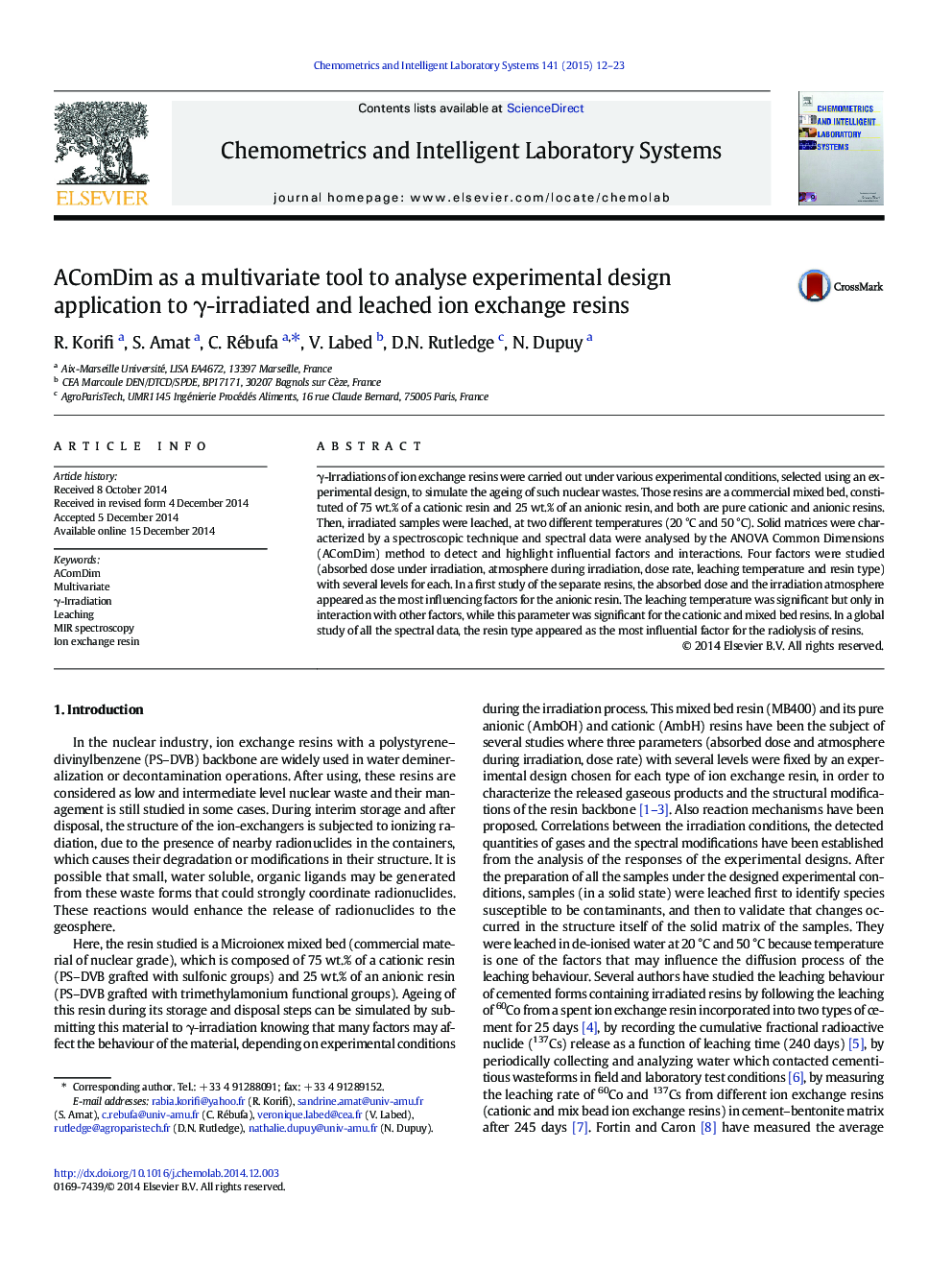| Article ID | Journal | Published Year | Pages | File Type |
|---|---|---|---|---|
| 1179378 | Chemometrics and Intelligent Laboratory Systems | 2015 | 12 Pages |
•Ageing of nuclear ion exchange resins was done with the help of experimental designs.•γ-Irradiations were carried out on cationic, anionic and commercial mixed bed resins.•Four factors with several levels were studied from spectral data of solid matrices.•The AComDim method allowed highlighting the influential factors and interactions.•The resin type appeared as the most influential factor for the radiolysis of resins.
γ-Irradiations of ion exchange resins were carried out under various experimental conditions, selected using an experimental design, to simulate the ageing of such nuclear wastes. Those resins are a commercial mixed bed, constituted of 75 wt.% of a cationic resin and 25 wt.% of an anionic resin, and both are pure cationic and anionic resins. Then, irradiated samples were leached, at two different temperatures (20 °C and 50 °C). Solid matrices were characterized by a spectroscopic technique and spectral data were analysed by the ANOVA Common Dimensions (AComDim) method to detect and highlight influential factors and interactions. Four factors were studied (absorbed dose under irradiation, atmosphere during irradiation, dose rate, leaching temperature and resin type) with several levels for each. In a first study of the separate resins, the absorbed dose and the irradiation atmosphere appeared as the most influencing factors for the anionic resin. The leaching temperature was significant but only in interaction with other factors, while this parameter was significant for the cationic and mixed bed resins. In a global study of all the spectral data, the resin type appeared as the most influential factor for the radiolysis of resins.
